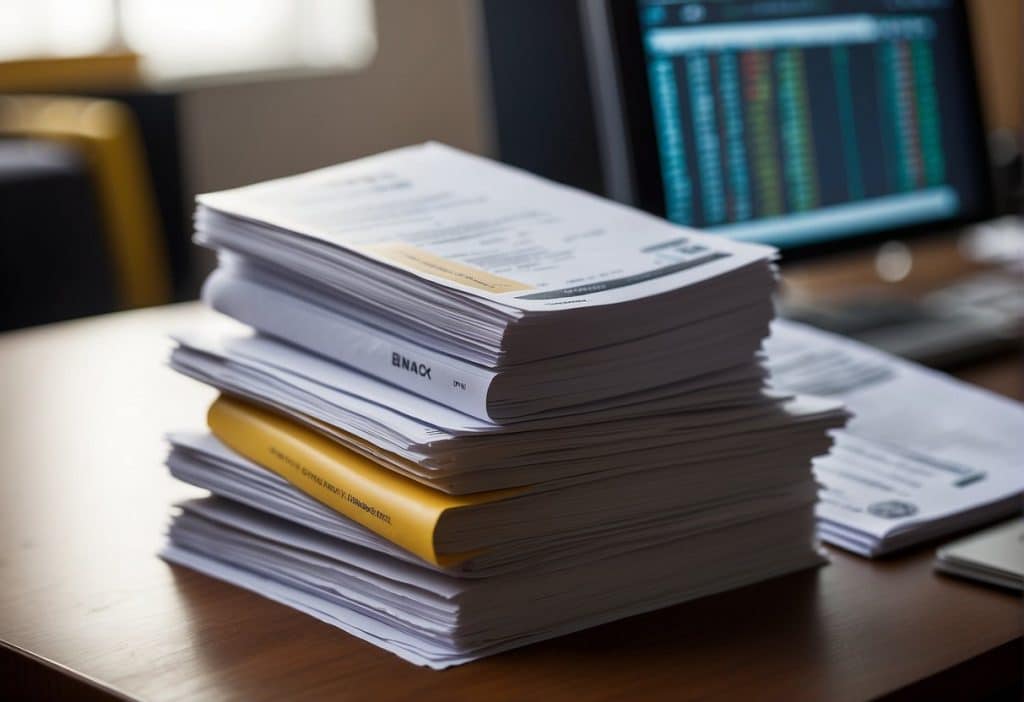Binance, a major player in the cryptocurrency exchange market, has implemented a system known as Proof of Reserves (PoR). This system is designed to enhance transparency by allowing users and stakeholders to verify that their assets are fully collateralized, providing a measure of security and trust in the platform. The PoR system is a critical mechanism that addresses the need for accountability and financial stability in the rapidly evolving digital asset space.

The PoR approach is particularly important in an industry that thrives on digital transactions where physical verification of assets isn’t possible. Binance leverages advanced cryptographic techniques such as zk-SNARKs for audit time verification, ensuring that users’ assets are backed at least on a 1:1 basis. This system not only strengthens user confidence but also sets a standard in the crypto industry for transparency and trust.
Key Takeaways
- Binance uses Proof of Reserves to confirm user assets are fully collateralized.
- Advanced cryptographic methods, including zk-SNARKs, are employed for verifications.
- The PoR system promotes transparency and trust in the cryptocurrency marketplace.
NOT YET A BINANCE USER?
Join today with the Binance Referral Code for exclusive benefits or read our Binance Review to learn why Binance is the right exchange for you!
GET UP TO 50% OFF TRADING FEES WITH THE CODE “WUPBLUYN”
Proof of Reserves Explained
In this section, you’ll gain a clear understanding of what the Proof of Reserves entails and why it matters to you as a user and to the wider market.
Concept of Proof of Reserves
Proof of Reserves (PoR) is a system that cryptocurrency exchanges use to show that the user deposits are fully backed by an equivalent amount of cryptocurrency holdings. Essentially, it assures you that the assets you hold on the exchange are there when you need them. Merkle trees, a data structure in cryptography, are often utilized in constructing a PoR. They enable the consolidation of multiple account balances into a single hash, called the Merkle Root, which is then verified using cryptographic proofs like zk-SNARKs (Zero-Knowledge Succinct Non-Interactive Argument of Knowledge).
For example, Binance’s PoR system may generate a Merkle Root Hash like 272cafea86240006f4e0d08502ff06d55e386202a48c38eab98304f43ec54266. This hash represents the state of all user balances at a certain audit time and is a compact, tamper-proof representation of the data.
Importance for Users and the Market
Proof of Reserves is crucial for maintaining your confidence as an investor, ensuring that the exchange has a 1:1 ratio of cryptocurrency reserves to customer deposits. When you see Binance or any other exchange articulate their PoR, you can be confident they have the funds to cover your asset holdings.
For the broader market, a proof-of-reserve audit is a transparency measure that can prevent insolvency rumors and associated market panic. It is particularly important in post-crisis scenarios, where trust is paramount for stabilizing the cryptocurrency ecosystem.
Binance’s Approach to Proof of Reserves

Binance utilizes advanced cryptographic techniques and structured processes to assure you that your assets are fully backed and secure. This method provides transparency and trust in the reserves held by the platform.
Merkle Tree and Merkle Leaf
Merkle Trees play a central role in Binance’s Proof of Reserves. Your individual holdings are represented as a Merkle Leaf. This allows you to verify your assets without exposing the identities of others or the entirety of Binance’s holdings. Through the aggregation of Merkle Leaves, Binance forms a Merkle Tree that efficiently summarizes all account balances.
Role of Cryptography
Cryptography is fundamental to Binance’s Proof of Reserves. Specifically, Binance employs zk-SNARKs (Zero-Knowledge Succinct Non-Interactive Arguments of Knowledge), a form of cryptographic proof. This ensures that you can trust the reserve audit without Binance revealing specific wallet details, maintaining the perfect balance between transparency and privacy.
Snapshot Time and Process
A “snapshot” refers to the exact time when Binance captures and records the state of all account balances. During this snapshot, your account details are frozen and transformed into a Merkle Leaf. The process is periodic and designed to ensure that at the moment of the snapshot, all user assets on the platform can be accounted for with precision, reinforcing the integrity of Binance’s Proof of Reserves.
Technological Framework of Proof of Reserves

Binance utilizes advanced cryptographic methods to ensure transparency and security in its Proof of Reserves system. This infrastructure is built on the backbone of blockchain technology, enhanced by zero-knowledge proofs to protect user privacy.
The Use of Blockchain
Blockchain forms the critical foundation for Binance’s Proof of Reserves (PoR). By design, blockchain is a decentralized and immutable ledger, offering a robust architecture for recording financial transactions. It ensures that user assets on Binance are not only transparent but also secured against unauthorized alterations. When engaging with PoR, you encounter an environment where every transaction is recorded on the blockchain, providing a clear trail of asset management and custody.
Zero-Knowledge Proof Technology
To balance the visibility of reserves with user privacy, Binance incorporates Zero-Knowledge Proof (ZKP) technology, specifically zk-SNARKs. ZKP allows Binance to verify the existence of user assets without revealing their specifics, ensuring your privacy remains intact. zk-SNARKs (Zero-Knowledge Succinct Non-Interactive Argument of Knowledge) is a form of ZKP that validates data accuracy without sharing the underlying data itself. Your assets are verified discretely, as zk-SNARKs enable Binance’s PoR system to confirm the sufficiency of reserves without exposing any identifying information about the assets or their owners.
Challenges and Solutions in Proof of Reserves

In the realm of cryptocurrency exchanges, Binance has implemented a proof-of-reserves system, which navigates the tightrope between ensuring user fund safety and maintaining operational integrity. Here, we dissect the complexities of their audit process, balance transparency with privacy, and address the influence of market volatility.
Audit Process and Third-Party Verification
When examining Binance’s financial situation, their use of a third-party auditor is paramount to validate their proof-of-reserves system. **However, challenges arise when such auditors suspend services, as seen with accounting firm Mazars pausing their work. The solution rests on establishing standardized protocols for reserve audits that integrate cutting-edge verification mechanisms like zk-SNARKs to maintain indisputable trust, even when third-party verifications face hiccups.
- Key Components:
- Third-party auditor involvement
- Standardized audit protocols
- Advanced verification technology (e.g., zk-SNARKs)
Transparency vs. Privacy Concerns
Your privacy remains a critical consideration; however, the integrity of user assets cannot be overshadowed. Binance strikes a balance by providing transparency into their operations without compromising your personal information. They highlight that corporate holdings—which represent a bulk of assets—are not included in proof-of-reserves calculations, shielding sensitive financial data while also ensuring assets are backed on a 1:1 basis.
- Balancing Act:
- Revealing sufficient operational data
- Protecting user privacy
Dealing with Price Volatility
Price volatility represents a substantive market risk, affecting the accuracy of real-time reserve checks. Binance’s approach to this challenge involves frequent updating of their proof-of-reserves to reflect the dynamic nature of asset valuations. By doing so, they assure you that despite market fluctuations, your assets remain secure and are equivalently backed at all times.
- Mitigation Strategies:
- Frequent reserve updates
- Real-time valuation adjustments
Binance’s Reserve Assets and Liquidity
You may find it essential to understand the composition, extent, and accessibility of Binance’s reserves. Knowing this can give you insights into the platform’s financial health and its ability to meet withdrawal demands.

Composition of Binance’s Reserves
Binance maintains a diverse array of reserve assets, including cryptocurrencies and possibly other forms of collateral. The assets are meant to match or exceed customer holdings on a 1:1 ratio, highlighting risk tolerance and ensuring funds are fully backed.
- BTC: The primary reserve asset.
- BNB: Binance’s native token.
- Altcoins: Various other cryptocurrencies.
BTC and Altcoin Reserves
The reserve initially focused on Bitcoin (BTC), but it has expanded to include various altcoins. These reserves include well-known tokens and are audited using zk-SNARKs to ensure transparency and trust.
- Bitcoin (BTC): The core component of the reserves.
- Altcoins: Additional cryptocurrencies added include MASK, ENJ, GRT, DOGE, among others.
Liquidity and Accessibility
Liquidity is vital for Binance, enabling you to withdraw assets promptly. Binance claims that your assets are accessible and liquid, with corporate holdings not part of the proof-of-reserves to mitigate risks.
- Risk Tolerance: Strategies in place to protect assets against market volatility.
- Access: User funds are pledged to be readily available, reflecting the platform’s liquidity.
User Trust and Safety
In the realm of digital assets, your confidence in the safety and the assurance that your funds are secure govern your willingness to use a platform. Binance, understanding this directive, articulates its commitment to trust by using Proof of Reserves and clear delineations between user assets and company holdings.
Role of Binance in User Safety
Your safety as a user is a paramount concern for Binance. The platform employs Proof of Reserves (PoR), allowing you to verify that each user balance is fully backed on a 1:1 ratio. Binance ensures that the wallet addresses where your funds are stored are separate from its corporate holdings. This transparency mechanism is fortified by employing advanced cryptographic techniques such as zk-SNARKs, providing an added layer of security to your assets.
Addressing User Concerns
Binance addresses your potential concerns by facilitating audits that are both internal and verified by third-party auditors. These audits are aimed at proving the availability of funds, and they publish these findings for you to review. For you, this means an additional layer of reassurance as Binance clearly demonstrates that the user balances reflect actual assets on hand.
Community and Corporate Holdings
Binance categorically segregates its corporate assets from user deposits to prevent misuse of funds. Below is a simplified representation:
| Funds Type | Description |
|---|---|
| User Balances | Assets held in trust, matching user deposits 1:1 |
| Corporate Holdings | Assets owned by Binance, not in reserves calculation |
This structure ensures that your funds are always available for withdrawal independent of Binance’s corporate financial status, which underscores the robustness of their PoR system in the facets of user trust and asset safety.
Regulatory Perspectives on Proof of Reserves

Your understanding of Proof of Reserves (PoR) is critical as it relates to both trust and regulatory compliance within the cryptocurrency industry. Binance, as a leading exchange, must navigate these waters effectively to maintain its reputation and operation within global markets.
Global Standards and Regulations
Global standards pertaining to Proof of Reserves are still in development, with no one-size-fits-all approach as of yet. However, you should be aware that Proof of Reserves is a process by which a cryptocurrency exchange publicly verifies that the total balance of customer deposits matches the holdings on the exchange, thus demonstrating solvency:
- Objective of Proof of Reserves: To provide transparency and build trust among users.
- Role of Regulators: Assessing the adequacy and integrity of Proof of Reserves.
Binance and Regulatory Compliance
Binance has implemented a Proof of Reserves system to endorse transparency and comply with emerging global regulatory standards. Your attention should be on the effectiveness of this system and its reception by regulatory entities:
- Reported Skepticism: Some regulators, like former SEC personnel, have viewed Binance’s PoR reports with skepticism due to concerns about the comprehensiveness of the financial controls in place.
- Updated PoR System: As of March 2023, Binance upgraded its PoR system to include verification for a wider range of tokens, reflecting a response to calls for increased transparency.
Future of Proof of Reserves
In the realm of cryptocurrency, your confidence in the system largely hinges on transparency and security. Proof of Reserves (PoR) serves as a critical mechanism to ensure that digital asset platforms hold sufficient reserves backing user deposits. As you continue to navigate this space, be aware that the future of PoR is poised to evolve with new verification advancements and profound impacts on the crypto ecosystem.
Advancements in Reserve Verification
With the integration of systems like Merkle Tree-based verifications and zero-knowledge proofs (zk-SNARKs), the precision and security of reserve audits are expected to improve. The future may introduce:
- Enhanced cryptographic methods that could further obscure individual account details while still affirming overall solvency.
- Widespread adoption of Real-Time auditing processes which can provide continuous confirmation of an exchange’s reserves.
These innovations will likely refine how you view and validate the solvency claims of any exchange you choose to engage with.
Impact on the Crypto Ecosystem
As PoR systems become more sophisticated and trusted, they’re set to have a notable effect on the wider crypto industry:
- Market Confidence: As users like you gain access to transparent reserve data, trust in exchanges is likely to increase.
- Investor Protection: The presence of robust PoR modalities can help safeguard your assets against mishandling or fraudulent activities.
The expectation is that more exchanges will implement PoR systems, making them a standard rather than an exception, thereby reshaping your perception of security within the crypto space.
Frequently Asked Questions
In this section, you will find answers to common queries regarding Binance’s Proof of Reserves, providing clarity on a fundamental aspect of the platform’s transparency and security measures.
How can users verify Binance’s Proof of Reserves?
You can verify Binance’s Proof of Reserves by accessing their publicly released system which provides evidence that user funds are fully collateralized. This feature initially started with Bitcoin and expanded to include more tokens.
What is the significance of Proof of Reserves for cryptocurrency exchanges?
Proof of Reserves offers you assurance that the cryptocurrency exchange holds the assets it claims to on behalf of its users. It is a critical aspect of transparency and trust in the platform’s operations.
Which assets are included in Binance’s Proof of Reserves?
Binance’s Proof of Reserves includes a variety of assets, such as Bitcoin (BTC) and other mainstream tokens. Over time, Binance has updated their system to cover additional tokens, ensuring wide-ranging transparency.
How frequently does Binance update its Proof of Reserves report?
Binance conducts a periodic update of its Proof of Reserves. Though specific timelines may vary, these updates ensure current information regarding the platform’s holdings is available to you.
What method does Binance use to conduct its Proof of Reserves audit?
Binance utilizes internal audits, supplemented by cryptographic techniques, to execute its Proof of Reserves. This method includes the use of hash functions and other forms of cryptographic verification.
Are there any third-party auditors involved in Binance’s Proof of Reserves verification?
Yes, Binance works with third-party auditors to substantiate the results of its internal Proof of Reserves audits, which helps further legitimize the findings for users like you.
